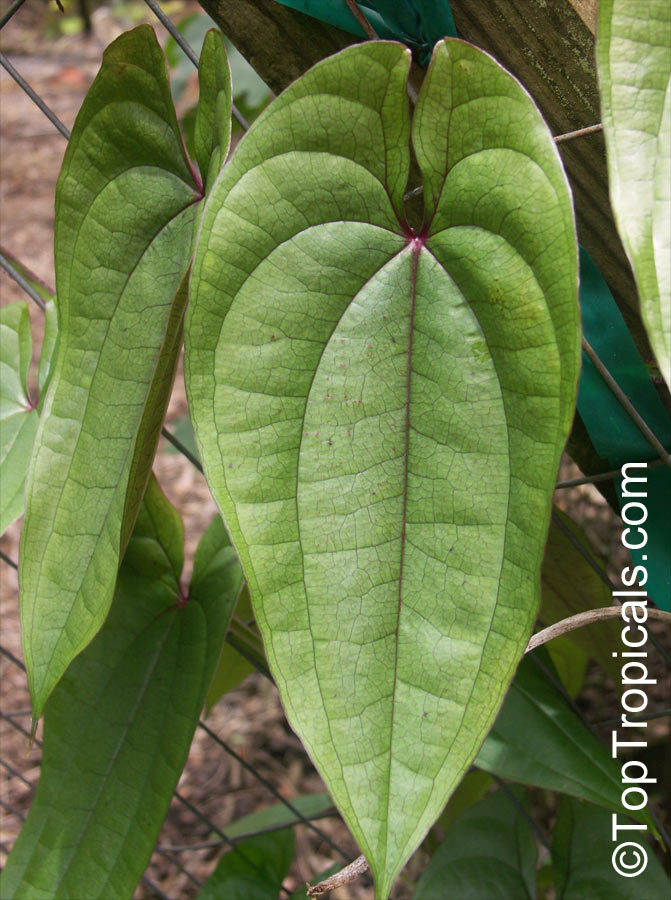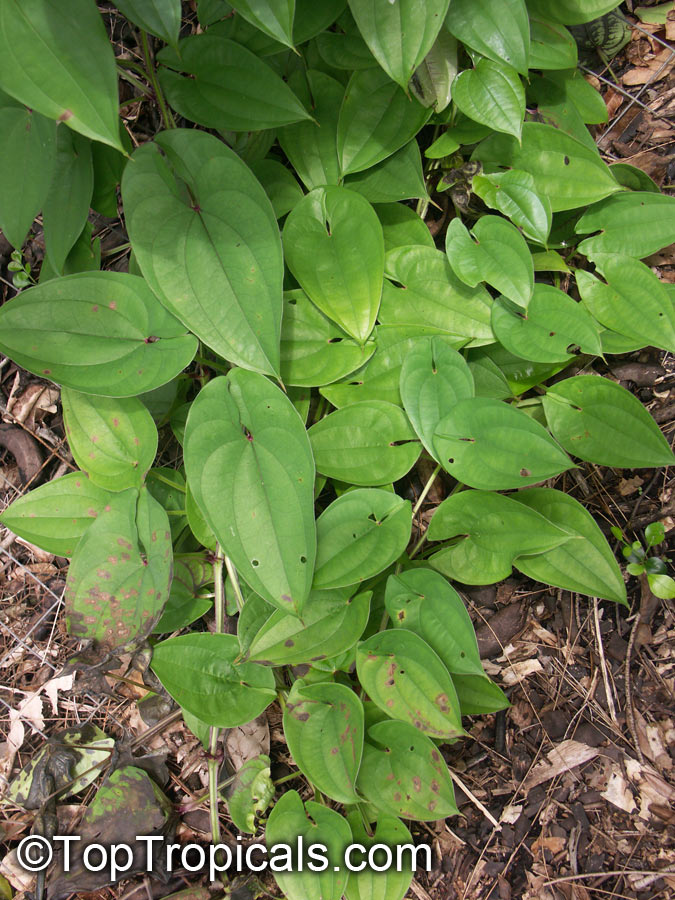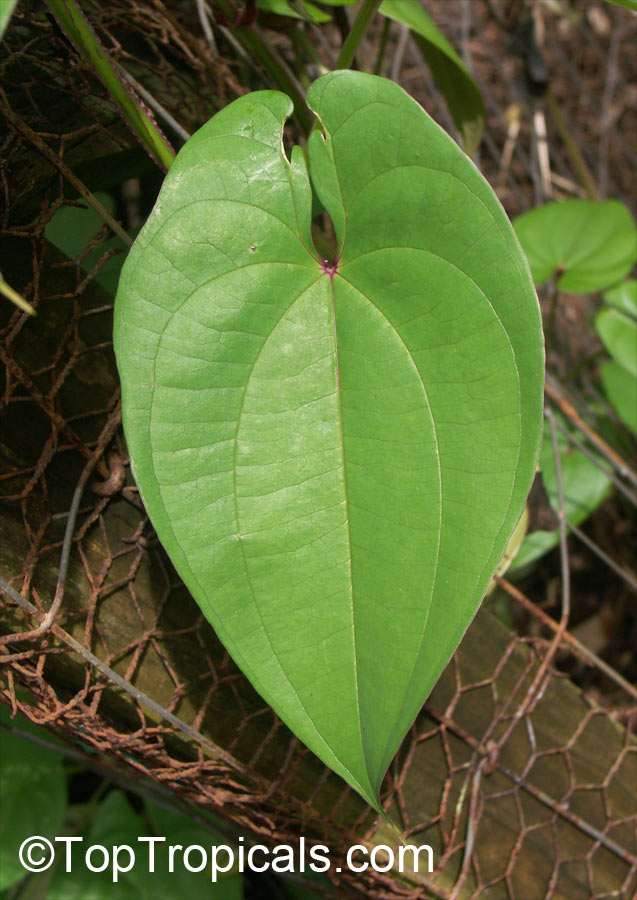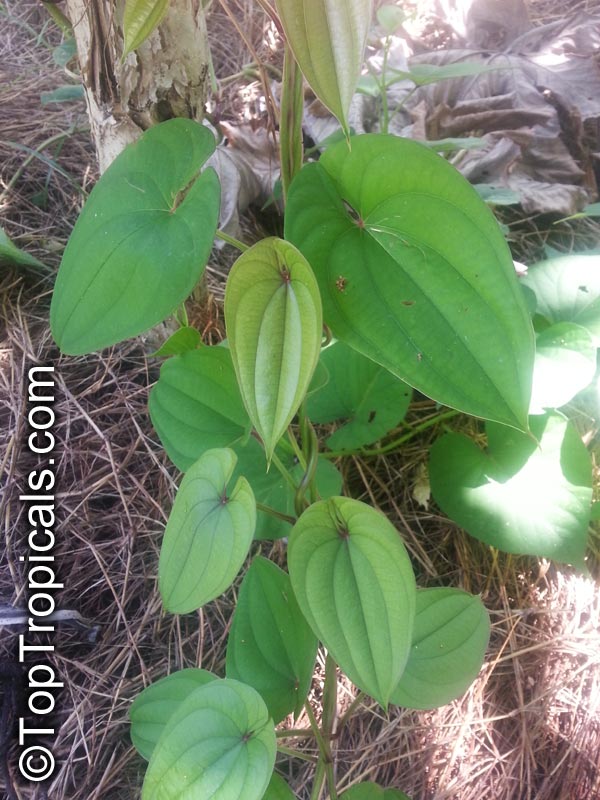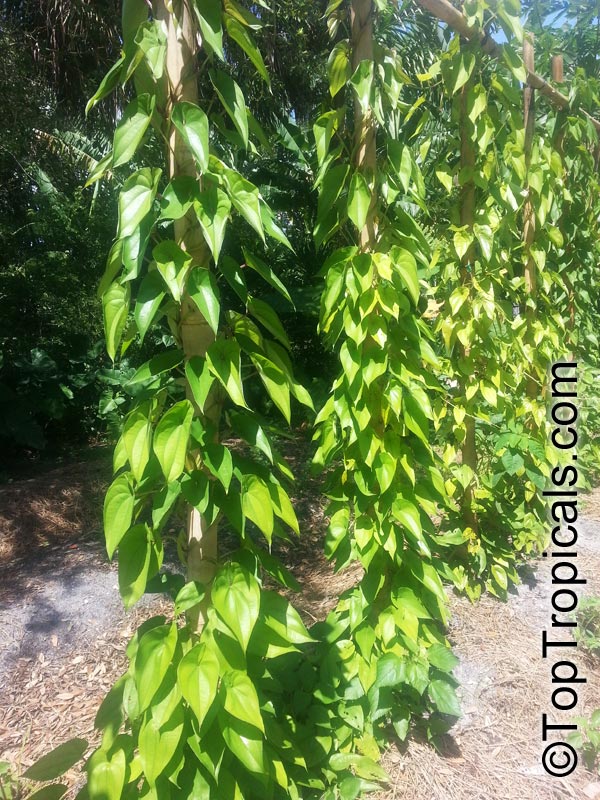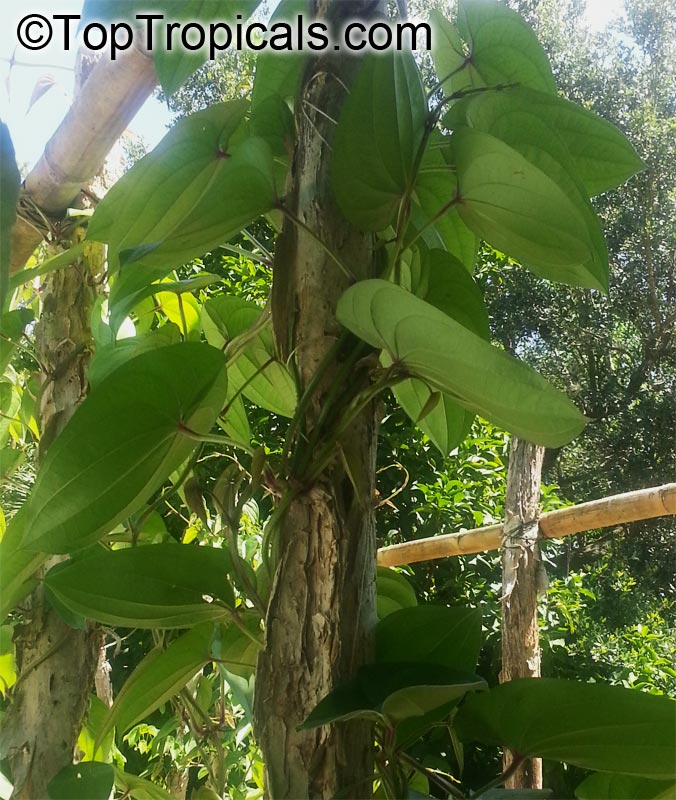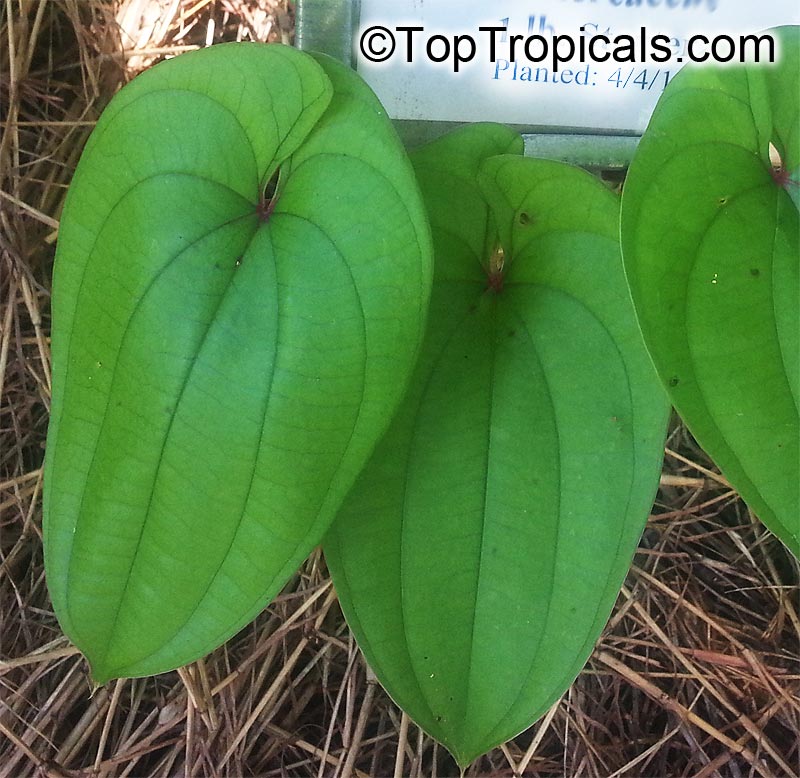Dioscorea alata (Purple Yam)
Top Tropicals Plant Encyclopedia
Botanical name: Dioscorea alata
Common names: Purple Yam, Winged Yam
Family: Dioscoreaceae
Origin: Southeast Asia






Dioscorea alata is a vine or creeper native to Southeast Asia. It requires full sun for germination and flowering, though it may also tolerate semi-shade. The plant needs regular watering and needs extra attention when in bloom and fruiting. Dioscorea alata is now grown in tropical areas in Southeast Asia and parts of Africa, including Ghana. In colder climates, it is usually kept in pots.
The plant has a winter dormant period during which its stems die back to the ground. Its underground tubers then give rise to new stems, which can reach up to 30 feet in length. The color of purple varieties of Dioscorea alata is due to various anthocyanin pigments, which have been proposed as potential food coloring agents. Wild plants, however, have been reported to be bitter or poisonous.
This ethnomedical plant is edible, both raw and cooked, and has been reported to have a range of therapeutic benefits. The fruits are edible when fresh, or dried and stored for future use. They may also be consumed as juice. Nutrition-wise, 100 grams of the purple variety contain 2.8 grams of protein, 51.3 grams of carbohydrates, 0.10 grams of fat, 3.7 grams of dietary fiber, and 10.2 g of sugar. It additionally has low levels of cholesterol and saturated fat.
Various health benefits are associated with Dioscorea alata, including improving vision and eye health, improving cholesterol levels, reducing blood sugar, and promoting digestive health. Its tuberous root is believed to be helpful for people with diabetes, as a decoction of it is used to treat diabetes throughout Latin America.
Gardens may be grown with Dioscorea alata for its ornamental value. Technically, the mature plant can withstand temperatures of up to 30 degrees Fahrenheit, though it is unlikely to survive much lower temperatures than that.
